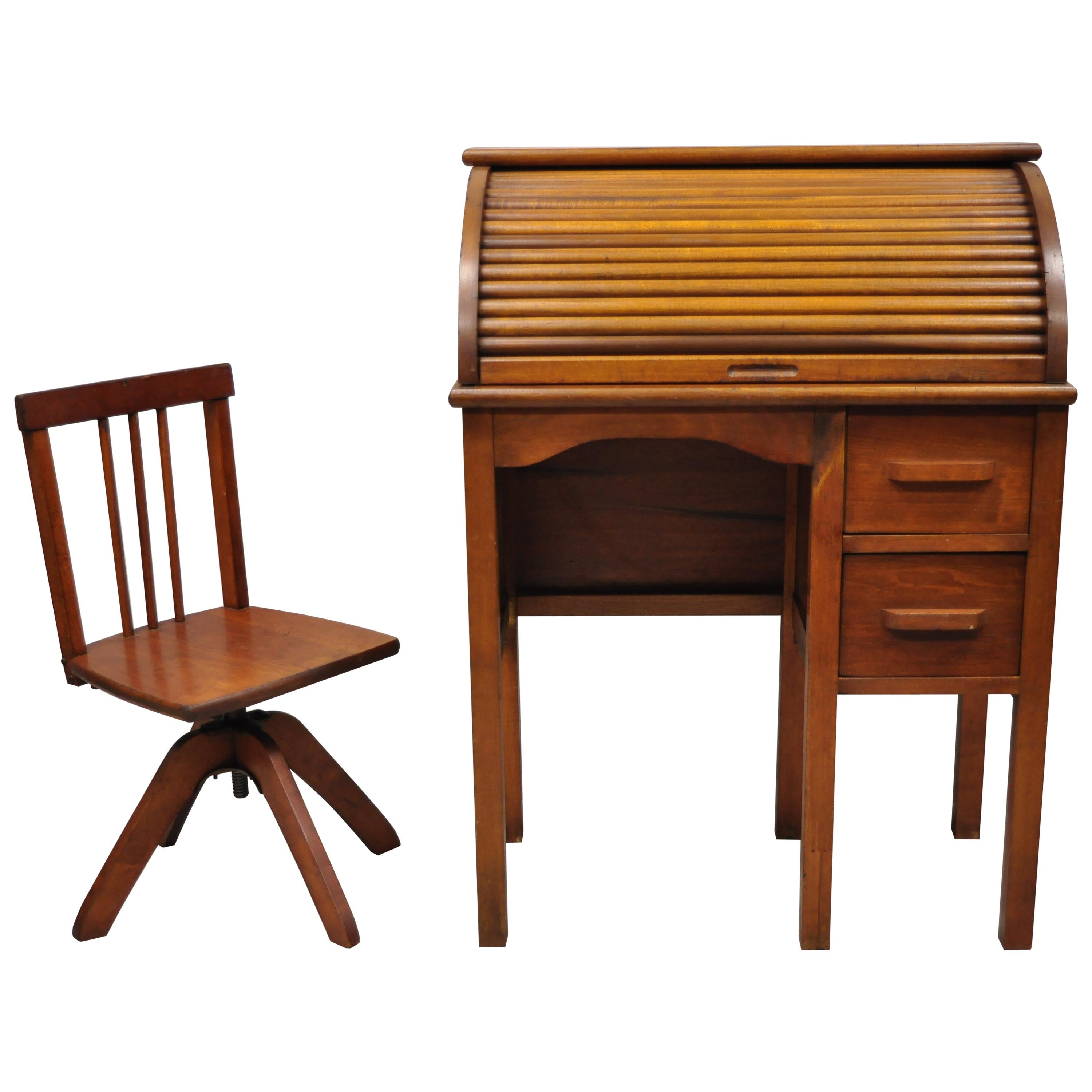Historical Context of Roll Top Desks and Chairs: Antique Roll Top Desk Chair

Roll top desks, with their iconic cylindrical tops and integrated chairs, represent a fascinating intersection of design, functionality, and social change. Their evolution reflects shifting attitudes towards work, privacy, and the organization of domestic and professional spaces. This exploration will delve into the historical trajectory of these pieces, examining their stylistic shifts and the societal contexts that shaped their popularity.
Evolution of Roll Top Desk Design
The earliest iterations of the roll top desk emerged in the late 18th and early 19th centuries, primarily as adaptations of existing writing desks. Early examples were often simpler in construction, utilizing readily available materials and basic joinery techniques. The roll top itself, initially a less refined mechanism, gradually evolved into the smoothly functioning, elegantly curved design associated with later periods. The Industrial Revolution significantly impacted manufacturing, allowing for mass production of more intricate components and the incorporation of improved hardware like better-quality hinges and locking mechanisms. The increased availability of standardized materials like hardwoods and metal further contributed to stylistic diversification and more affordable options. The peak of roll top desk popularity occurred during the Victorian and Edwardian eras, with manufacturers refining designs and offering a wide range of styles to suit various tastes and budgets.
Comparative Analysis of Roll Top Desks and Chairs Across Historical Periods, Antique roll top desk chair
The following table compares and contrasts the design features of roll top desks and chairs across different historical periods. Note that while chairs specifically designed to accompany roll top desks are less consistently documented, the styles of chairs commonly used alongside them reflected broader design trends of the era.
| Period | Notable Features | Materials | Representative Images |
|---|---|---|---|
| Victorian (1837-1901) | Ornate carvings, dark, rich wood finishes, often incorporating inlaid details, complex roll top mechanisms, sometimes with multiple compartments and drawers. Accompanying chairs were often upholstered in dark fabrics like velvet or leather, with carved or turned wooden legs. | Mahogany, walnut, rosewood, oak; brass hardware; leather or velvet upholstery for chairs. | Imagine a large, imposing desk made of dark mahogany, heavily carved with swirling patterns and floral motifs. The roll top is a rich, dark brown, and the brass hardware gleams. The accompanying chair is a high-backed, upholstered armchair with dark red velvet upholstery and intricately carved wooden legs, echoing the style of the desk. |
| Edwardian (1901-1910) | Simpler lines than Victorian pieces, lighter woods and finishes, often incorporating lighter colors and more delicate details. Roll top mechanisms were refined and smoother. Chairs maintained a similar upholstered style but with simpler, more streamlined designs. | Mahogany, cherry, lighter oak; brass or nickel hardware; lighter colored upholstery fabrics, possibly including patterned textiles. | Envision a desk made of lighter-colored mahogany or cherry wood. The carvings are less profuse than the Victorian example, with simpler, more elegant lines. The roll top is a lighter brown, and the hardware is a polished nickel. The accompanying chair is upholstered in a light beige fabric with a subtle floral pattern and features straight, tapered wooden legs. |
| Arts & Crafts (1880s-1920s) | Emphasis on handcrafted quality, simple, clean lines, natural wood finishes, often with visible joinery, functional design prioritized over elaborate ornamentation. Chairs would reflect the same emphasis on simplicity and functionality, often with simpler, less ornate designs. | Oak, pine, or other locally sourced hardwoods; minimal metal hardware; often with natural, unfinished or lightly stained wood finishes. Chair upholstery might include simpler fabrics like linen or cotton. | Picture a desk crafted from light oak, with visible mortise and tenon joinery. The design is straightforward, with clean lines and minimal ornamentation. The roll top is a light, natural wood color. The accompanying chair is a simple, sturdy wooden chair with a straight back and seat, possibly with a rush or woven seat. |
Social and Cultural Significance of Roll Top Desks and Chairs
Roll top desks and their accompanying chairs held significant social and cultural weight throughout their history. In the Victorian era, they symbolized status and success, becoming fixtures in the offices of professionals and the homes of the wealthy. Their ability to conceal paperwork and supplies contributed to a sense of privacy and order, reflecting the values of the time. The Edwardian era saw a slight shift, with designs becoming more accessible to the middle class, but they still retained their association with professionalism and organization. The Arts & Crafts movement embraced the roll top desk’s functionality, emphasizing craftsmanship and natural materials, aligning with the movement’s broader aesthetic and social ideals of simplicity and honest design. In public spaces, roll top desks were less common, but their presence in offices and government buildings underscored their role as symbols of efficiency and professionalism.
